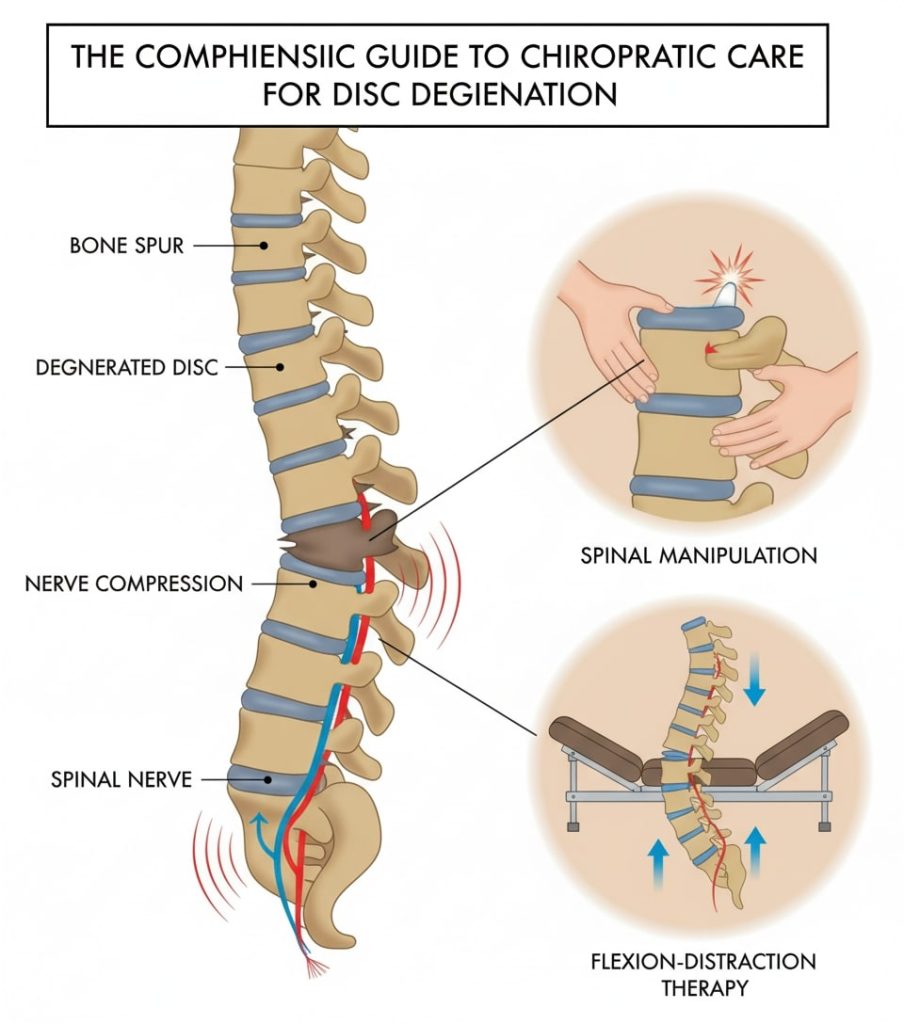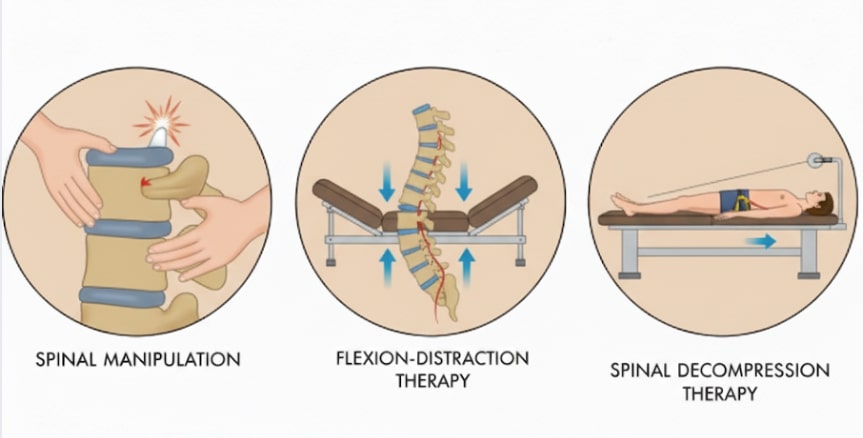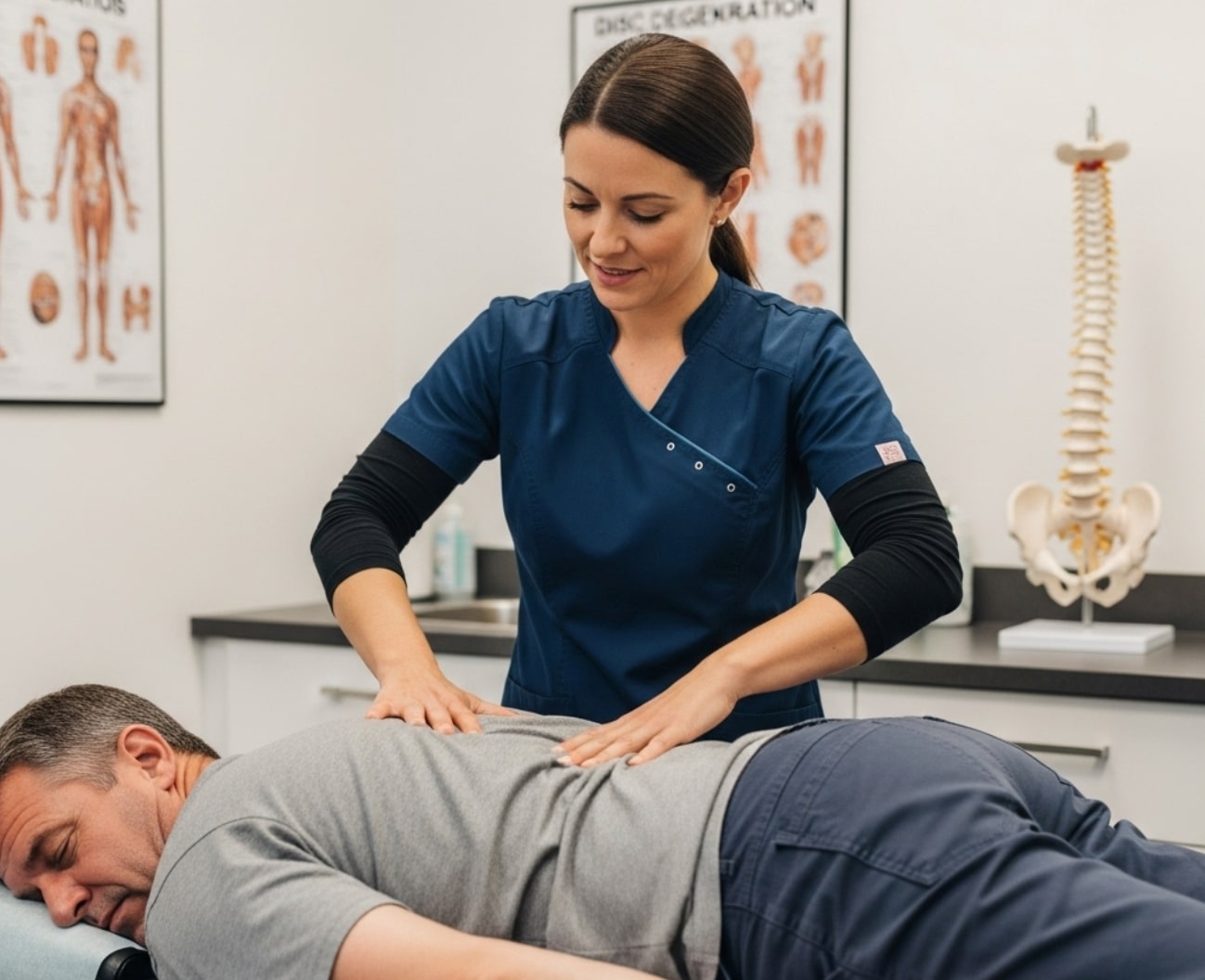Chiropractor Care For Disc Degeneration in Bukit Damansara
You’ll spend RM1,000 on an ergonomic chair to “protect” your back… then sit in it for 10 hours straight.
This habit is doing as much damage to your spine as any cheap chair ever could.
The truth is, furniture isn’t the real problem.
Sitting too long, poor posture, and lack of movement are.
But let’s clear up a big misconception…
Doctors often say disc degeneration is just “normal aging.”
But if that were true, how do athletes in their 40s still perform at their best while many office workers in their 30s struggle to get out of bed?
The difference comes down to spinal care and lifestyle.
In this blog, we’ll cover what degeneration disc disease is, why common fixes don’t last, and how chiropractic care in Bukit Damansara can give you lasting relief.
Let’s dive in.
The Comprehensive Guide to Chiropractic Care for Disc Degeneration
Back pain is one of the most common reasons people seek medical care, and for many, the culprit is a condition called disc degeneration. This progressive, age-related process can cause chronic pain, stiffness, and nerve-related symptoms that can significantly impact your daily life. While disc degeneration is a natural part of aging, living with its symptoms doesn’t have to be. For millions of people, chiropractic care offers a safe, effective, and non-invasive way to manage and find lasting relief from this challenging condition.
We believe in empowering our patients with knowledge and providing exceptional care. This comprehensive guide will walk you through what disc degeneration is, how our expert chiropractors approach its treatment, and the range of therapies and lifestyle adjustments that can help you regain your quality of life.

What Is Disc Degeneration?
Spinal discs are small cushions between our vertebrae, and they’re the natural shock absorbers of our spine.
Over time, these cushions can dry out, get thinner, and lose their bounce. This is called disc degeneration.
This causes the bones to move closer, which in turn can cause pain, stiffness, and sometimes nerve irritation.
A sedentary lifestyle makes this worse. Hours spent hunched over a laptop, poor posture in the car, and little physical activity all put extra strain on your spine.
Age plays a part too, but the way you live has a big impact on how fast (or slow) discs wear out.
The important thing to know is that degenerative disc disease may be progressive, but it doesn’t have to control your life. With the right care, it can be managed.
The Limitations of Medication and Surgery
We often see patients who’ve spent months or even years on conventional treatments that eased pain for a while but didn’t solve the problem.
|
Treatment |
What It Promises |
The Limitation |
|
Medication |
Quick pain relief, less inflammation |
Masks symptoms. Degeneration continues. Pain returns. |
|
Surgery |
Repairs severe disc damage, nerve relief |
Invasive, costly, risky. Long recovery. Last resort. |
A Non-Surgical Approach to Disc Degeneration Relief
Chiropractic care gently realigns your spine and takes pressure off worn-out discs and irritated nerves. In simple terms, it gives your spine the space and balance it needs to move the way it’s supposed to.
Spinal manipulation is a gentle technique chiropractors use to realign your spine and take pressure off your discs. By doing this, it helps your spine move more naturally and feel more comfortable.

Core Chiropractic Treatments for Disc Degeneration
Our skilled chiropractors utilize a variety of advanced techniques and therapies to effectively manage the symptoms of disc degeneration. Here are some of the most common and effective approaches we employ:
1. Spinal Manipulation (Chiropractic Adjustments)
This is the cornerstone of chiropractic care. Using precise, gentle, and controlled force with their hands or a specialized instrument, our chiropractors apply targeted adjustments to spinal joints that are restricted in their movement. The primary goal is to restore proper joint mechanics, which in turn reduces nerve irritation, decreases pain, and improves your overall range of motion. For disc degeneration, these adjustments ensure that the joints above and below the affected disc are moving optimally, helping to alleviate pressure on the degenerated area.
2. Flexion-Distraction Therapy
This is a gentle, non-thrusting technique performed on a specialized table that moves in a slow, rhythmic motion. Our chiropractors apply light pressure as the table gently flexes and distracts (stretches) the spine. This controlled movement is highly beneficial for disc issues as it helps to:
- Gently separate the vertebrae to create more space for the degenerated disc.
- Encourage the flow of vital fluids and nutrients into the disc.
- Effectively relieve pressure on irritated spinal nerves.
- Improve spinal flexibility and range of motion without any harsh force.
3. Spinal Decompression Therapy
We utilize advanced spinal decompression therapy, which employs a sophisticated traction table to gently stretch the spine in a controlled and precise manner. The aim is to create negative pressure within the disc space. This not only helps to take pressure off the nerves but also promotes the circulation of oxygen and nutrients to the disc, aiding in its hydration and overall health. This therapy is particularly effective for managing pain associated with nerve root compression.
4. Soft Tissue Therapy
We understand that pain from disc degeneration isn’t just about bones; muscles play a vital role in supporting the spine. When a disc degenerates, the surrounding muscles often become tense, tight, and spasm as a protective mechanism. Our chiropractors and therapists use various soft tissue therapies to address this muscle tension, including:
- Therapeutic Massage: To reduce muscle spasms, alleviate tension, and improve blood flow.
- Trigger Point Therapy: To release painful, localized knots within the muscles that contribute to referred pain.
- Instrument-Assisted Soft Tissue Mobilization: To break down scar tissue, improve tissue elasticity, and restore muscle function.
What Happens During Your First Chiropractic Visit
You’ll be guided through these simple steps after visiting our clinic:
- Understanding your story: We listen to your pain, daily struggles, and what your goals are.
- Posture & movement check: We see how your spine moves during everyday activities and identify areas needing postural correction and soft tissue therapy.
- Scan review: If you have X-rays or scans, we explain them.
- Personal care plan: We create a plan for you with clear steps.
Everything is explained clearly. We answer your questions and make sure you feel fully comfortable before any treatment begins.
Our approach means you’ll experience the benefits of flexion-distraction therapy, spinal decompression therapy, and postural correction all working together to address your disc degeneration completely.
Ready to experience the difference that specialized chiropractic can make for your degenerative disc disease?
Contact MyHealthWorks today to schedule your assessment and start your journey toward lasting relief.


